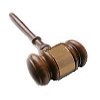Patent Strategies

The patent strategies you use depend upon what you're trying to accomplish.
The main purpose of a patent is to ensure that the unique aspects of your invention are actually unique and that you invented them.
But even if you're granted a patent, what you invented is subject to interpretation and debate.
Rights
A patent does not grant a monopoly right. It is a litigation document. It's filed precisely for that purpose—to be used in litigation. The only rights granted by a patent are the rights to sue somebody.
A patent grants "suing rights" so you can sue anybody who you think is making, using, selling, promoting for sale, or importing an invention like yours into the country where your patent was issued.
It is your right to sue anyone you believe has infringed on your invention in the country that issued you a patent.
Intellectual Fence
A patent is like an "intellectual fence" around your property. It is located between your property and other properties. The property is your invention. The fence is a description of where the boundaries are located around your property.
A surveyor (lawyer/agent) does a survey of your property and writes a description (patent) of where he thinks your fence is located. This fence is located between what is unique and different about your invention compared to other similar inventions.
Because "intellectual" fences are barriers you can’t see, others might inadvertently wander onto your property or they may intentionally wander onto your property to see if you will do anything.
Your "right to sue" is the right to sue trespassers. You may think they're trespassing, but they may not see it that way. They may disagree with the location of your fence.
They may think your fence is trespassing on their property.
They may disagree that you should have a fence. They may erect a fence that pushes your fence back and challenges the boundary line of your property.
Attorneys often recommend patent strategies that involve building "portfolios", which means building lots of complex fencing.
It’s like constructing a “Berlin Wall” around your property with snipers and guard dogs everywhere.
In fact, your "intellectual fence" is only as good as you can enforce it. It is your "right to sue.”
The truth is, your "fence" means nothing until it has been adjudicated in court. This is very expensive. You could have dozens of neighbors bordering your property. Some of them could be patent attorneys. Many of them are in court quite frequently. Many cases can take years to resolve.
You can check this out for yourself by conducting a search on the Internet. Type in your browser "lawsuits + patent infringement" without the quotation marks. To find a specific company it would be "name of company + patent infringement". You can also use "patent royalty infringements" or include the country in your search. This will give you some idea of the thousands of lawsuits going on.
Company executives know that the odds of an inventor being able to afford the costly litigation to sue anybody is remote; and even if the suit is brought, most courts will hold the patent to be partially or wholly incomplete because patent attorneys are really good at showing how patents are inadequate.
Deterrent
 This doesn't mean patent strategies are useless.
This doesn't mean patent strategies are useless.
Patents do inhibit people from walking on your property and many people like to have them.
It's like having a “beware of dog” sign on your property to deter trespassers who don't want to get attacked.
Patents are also useful for enforcing licensing agreements. In fact, there are companies and attorneys (known as trolls) that do nothing but file and/or purchase patents.
They then use these patents to arrange/enforce licensing arrangements with manufacturers who they believe may be infringing on their property.
Historically, from the days of television and even before then, threatening litigation has always been an effective means of negotiating royalties or settlement payments because such tactics can adversely affect a targeted company's share values, credit lines and distribution agreements.
Even though allegations of infringement may be questionable, they can often cause a company to settle in order to preserve confidence in their company and products rather than face years of expensive litigation.
Many successful inventors believe patent strategies are rather secondary to the strength of their sales revenues because it provides the financial resources to compete in the market place, which includes patent litigation.
At least that was the opinion of one of the most successful inventors in history - Thomas Edison.
Before preparing litigation documents you should seek professional legal advice from a qualified lawyer in the jurisdiction where you will be filing a patent.
Source: Patent Strategies is excerpted from our free eBook, 5 Big Lies - On Selling Inventive Ideas.





